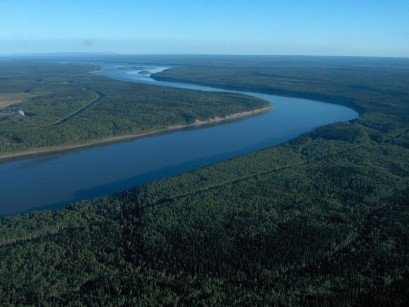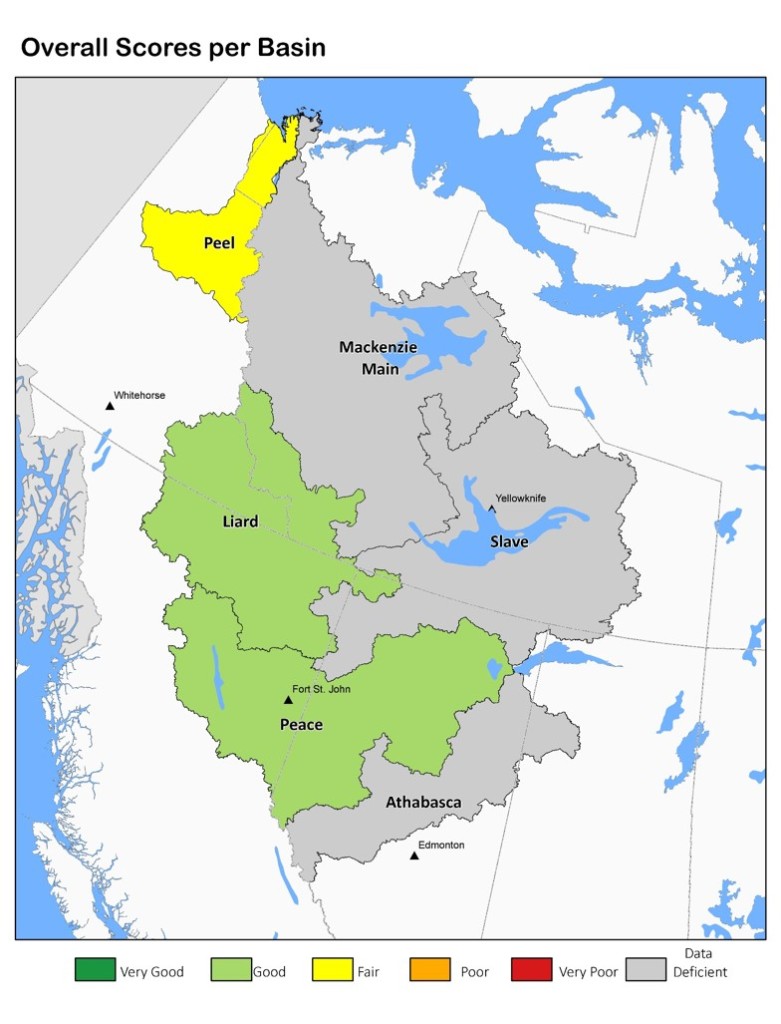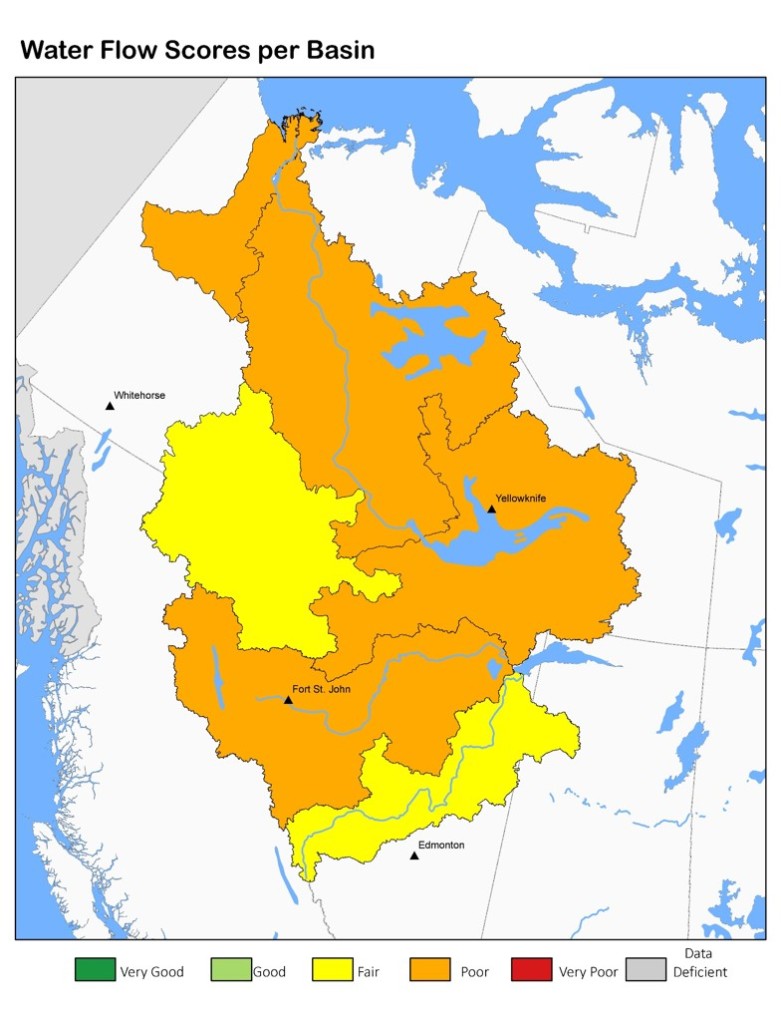The Mackenzie River Basin: Six Freshwater Health Assessments later
Written by Sophie Taddeo, Freshwater Analyst
With a drainage basin of 1.8 million square kilometers, the Mackenzie River Basin is among the ten largest river basins in the world. The Mackenzie River plays a major role in regulating the world’s ocean circulation, as well as the Arctic climatic systems. Its ecological, cultural, and economic significance for Canadians is undeniable: the basin not only drains 20 per cent of Canada’s total land mass, but is also home to more than 1% of the Canadian population, including several Aboriginal populations. It encompasses six sub-basins: the Mackenzie, Great Slave, Peel, Liard, Peace, and Athabasca and is shared by six jurisdictions- Yukon, Northwest Territories, Nunavut, British Columbia, Alberta, and Saskatchewan!

Unfortunately, this natural treasure is now facing multiple threats. The exploitation of the oils sands, the increasing interest in Northern development, and a changing climate are all stressors that could impact its water quality and quantity, as well as the many species and communities that depend on it. Needless to say, understanding the health of such a vital component of our country’s water reserve is incredibly important.
WWF experts dedicated countless hours reaching out to key experts and stakeholders of the region, pooling data from multiple sources in an effort to paint a rigorous and accurate picture of Mackenzie River Basin’s health. We’ve been incredibly fortunate to get the help and collaboration of several organizations doing wonderful on-the ground work, including many federal and provincial ministries, and aboriginal governments, with the support of the Walter & Duncan Gordon Foundation. And after all these long hours dedicated to gathering, formatting and analyzing data, what did we find? Well, in a nutshell, that we need more data!
In fact – as shown on the map below – we were unable to source enough data to generate a reliable health score for half of the watersheds in the Mackenzie system. Nonetheless, there are many interesting findings that emerged from our assessment.
First, we found that water flows have been severely impacted throughout the region. In the southern part of the system, we saw the natural cycles of rivers shifted, often by dams. In the northern area, a significant increase in the annual discharge of the watershed (how much water it expels into the Arctic Ocean) and a shift in the monthly patterns of water flows contributed to low scores. These later results may reflect the impact of a warming climate and melting permafrost, but further research would be required to fully investigate this theory.
We were pleased to observe that only a small proportion of the water samples analyses failed to meet provincial and federal water quality guidelines. These encouraging results suggest that the water quality is generally good in the region. However, while several portions of the system have well-developed water monitoring programs, others have received little attention these past years, making it difficult for us to accurately evaluate their health.
We faced similar challenges when looking at bugs and fish communities sheltered within the basin. Where data was available, communities were generally doing well – with the exception of the lower portions of the Athabasca River. However, many sub-watersheds in the northern portion of the system did not meet our data standards for the bug and fish metrics.
Fortunately, a number of monitoring and restoration initiatives are currently being undertaken by dynamic organizations and citizens groups throughout the Mackenzie basin. The Northwest Territories government, for example, has recently initiated an ambitious community-based monitoring program, in which local populations are actively being engaged in the monitoring of local water resources. With such promising efforts, it’s our hope that we can develop a clearer picture of the Mackenzie River Basin’s health in the next few years.
WWF-Canada would like to thank The Walter and Duncan Gordon Foundation for their support of this important work.



